Sage green kitchen islands combine functionality with a soothing, nature-inspired palette that instantly transforms a cooking space into a serene haven. This versatile hue pairs beautifully with natural materials—think warm woods, veined marbles, and woven textures—while accommodating a range of styles from modern minimalism to rustic cottage charm. Designers praise sage green for its ability to ground bold accents like brass hardware and patterned tiles, and for offering a soft yet impactful focal point in open-plan layouts. Whether used on shaker-style cabinetry or sleek, handleless fronts, a sage green island can seamlessly integrate seating, storage, and prep zones into a cohesive, inviting heart of the home.
1. Classic Shaker Paneling with Marble Countertop
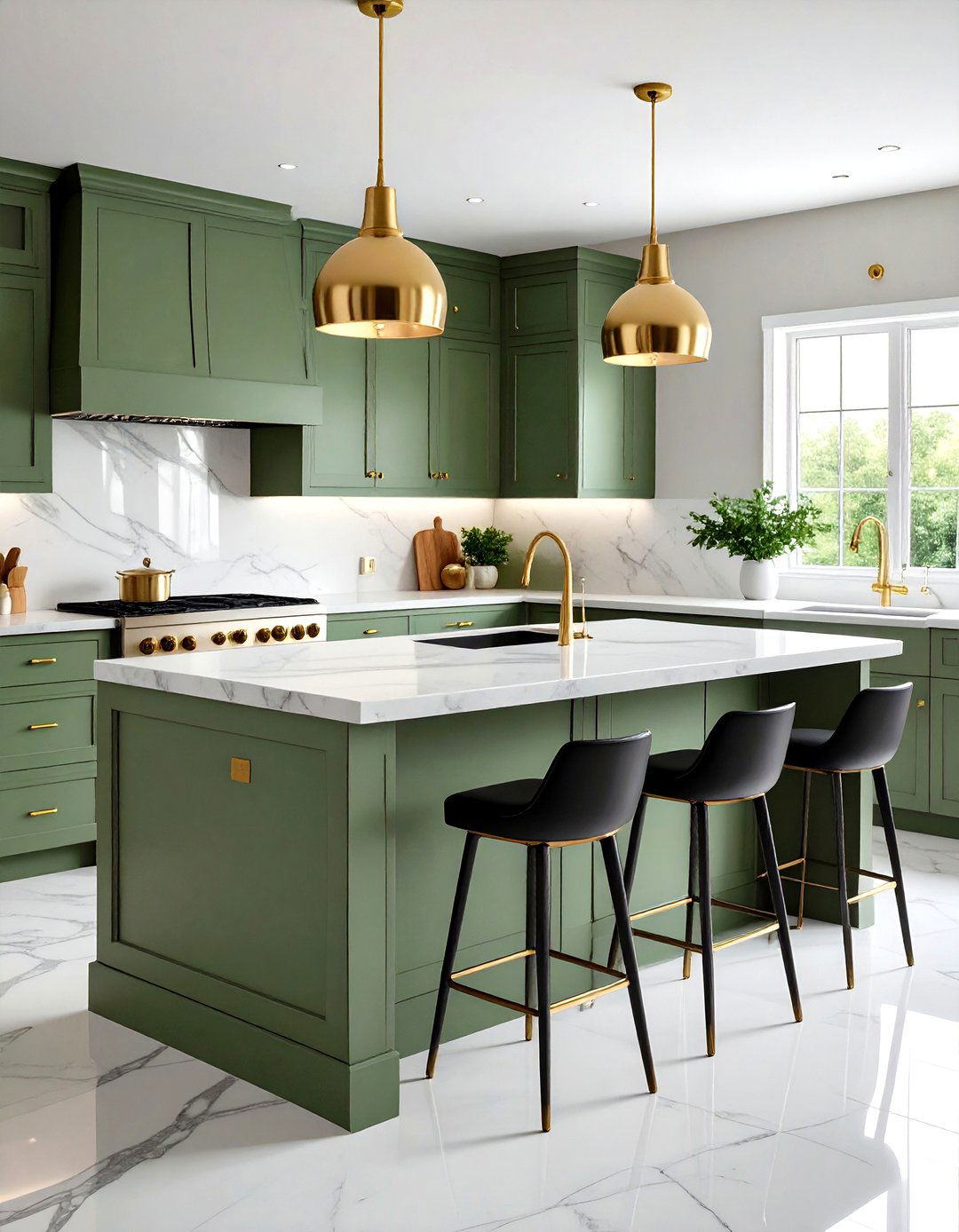
Classic shaker-style panels painted in sage green bring timeless appeal, while a white or gray marble countertop adds luxe contrast. The crisp lines of the cabinetry emphasize clean, architectural detailing, and the cool veining in the stone brightens the palette. Pair with simple brass cup pulls for warmth, or matte black barstools for a modern edge.
2. Open Shelving Accent
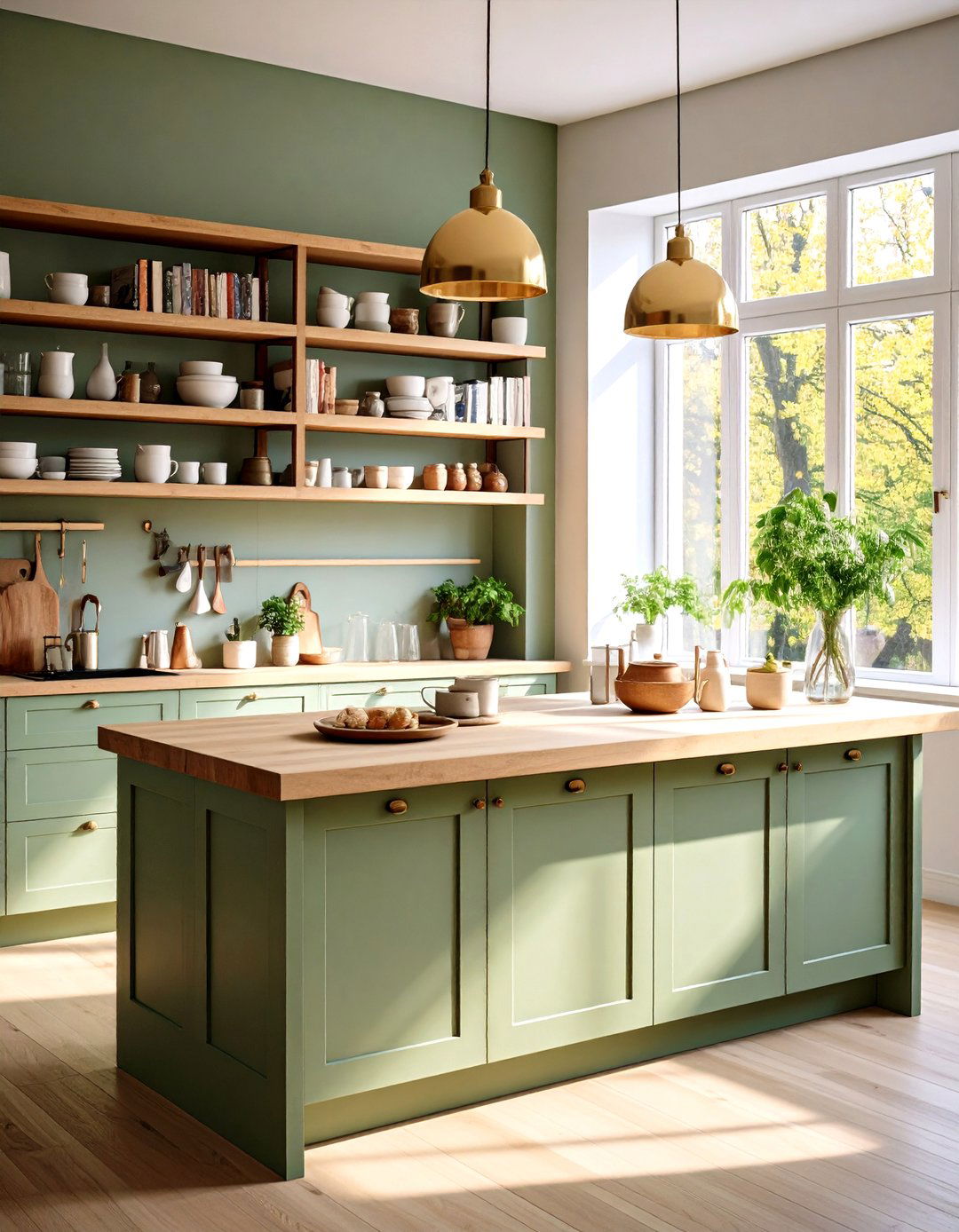
Incorporate open shelving at one end of the island to showcase ceramics and cookbooks against the sage backdrop. Natural oak or walnut shelves introduce texture, making the island feel lighter and more airy. This approach balances closed cabinetry with display space, perfect for casual entertaining.
3. Two-Tone Contrast Design

Paint the base of the island sage green and the countertop overhang or seating area in a complementary neutral—such as soft white or dove gray. This two-tone scheme visually delineates prep and dining zones, enhancing the island’s functionality while maintaining a cohesive color story.
4. Butcher Block Countertop Warmth
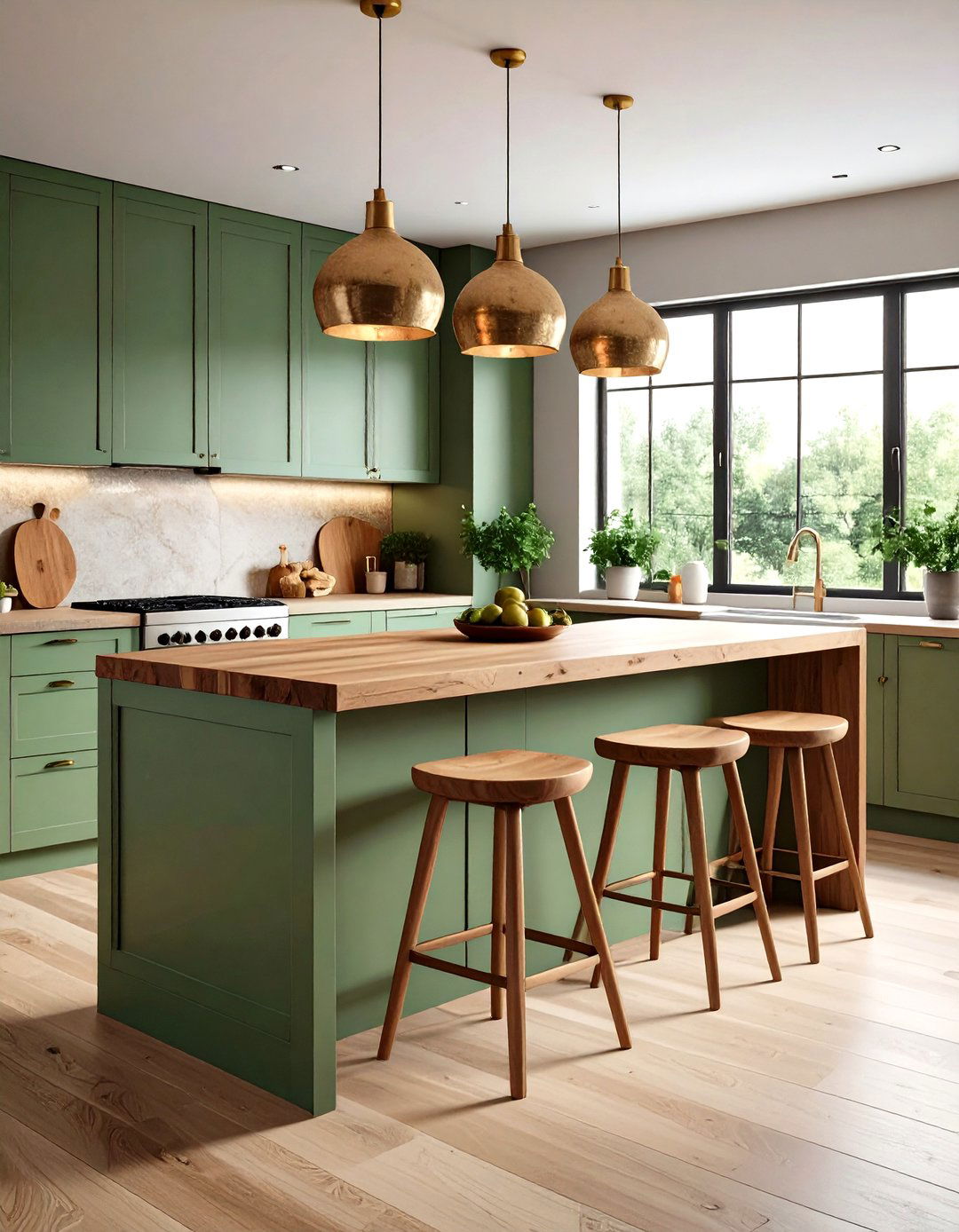
A solid butcher block countertop atop a sage green island infuses warmth and a tactile, organic element. The wood’s natural grain pairs beautifully with the muted green, creating a cozy, lived-in feel. It’s ideal for food prep and doubles as a breakfast bar with wooden stools.
5. Brass Hardware Touches
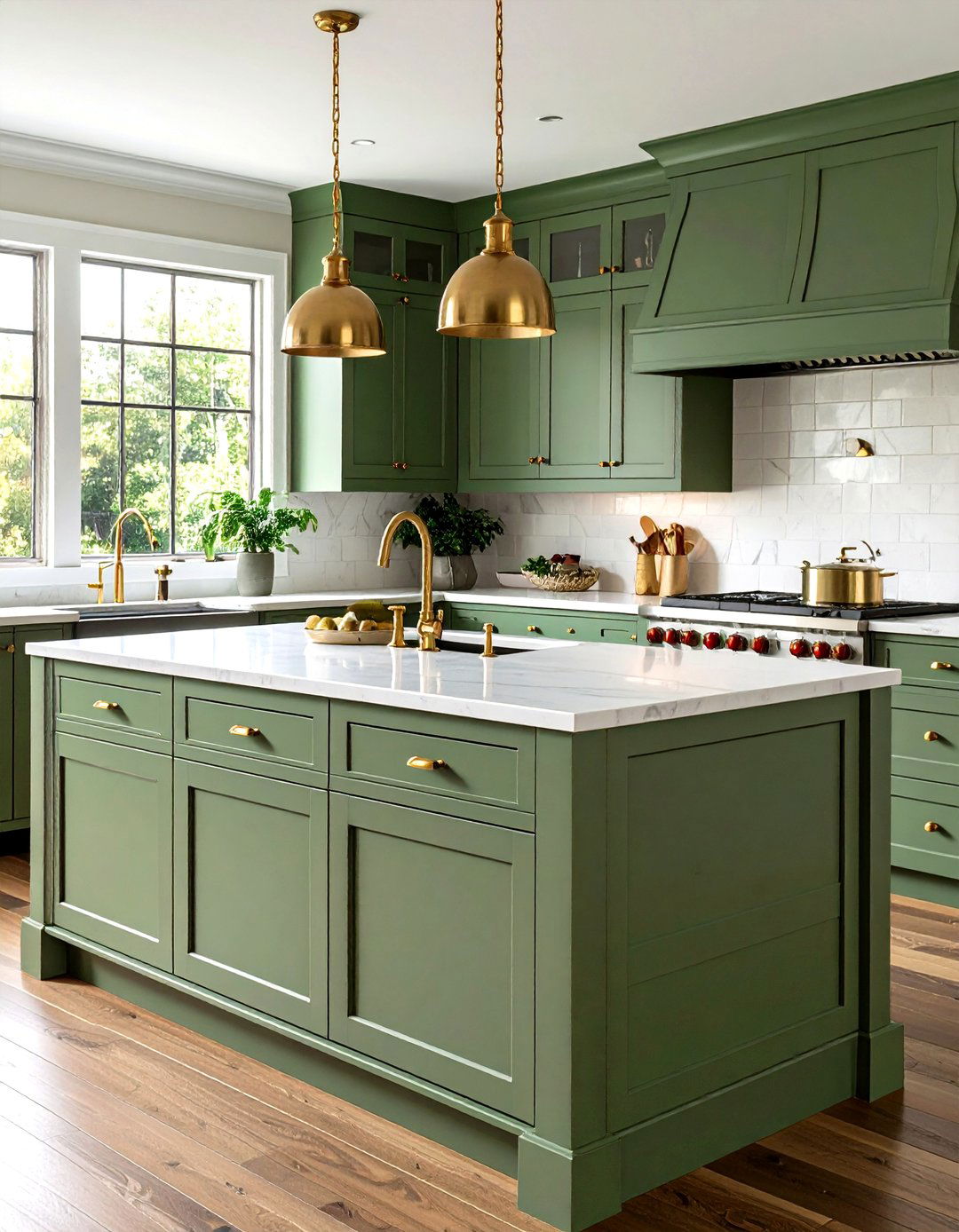
Elevate a sage green island with brass knobs, pulls, and faucet fixtures. The metallic sheen of brass highlights the green’s undertones and adds a hint of glamour. This combination works equally well in traditional and contemporary kitchens, especially when balanced with neutral countertops.
6. Minimalist Modern Lines
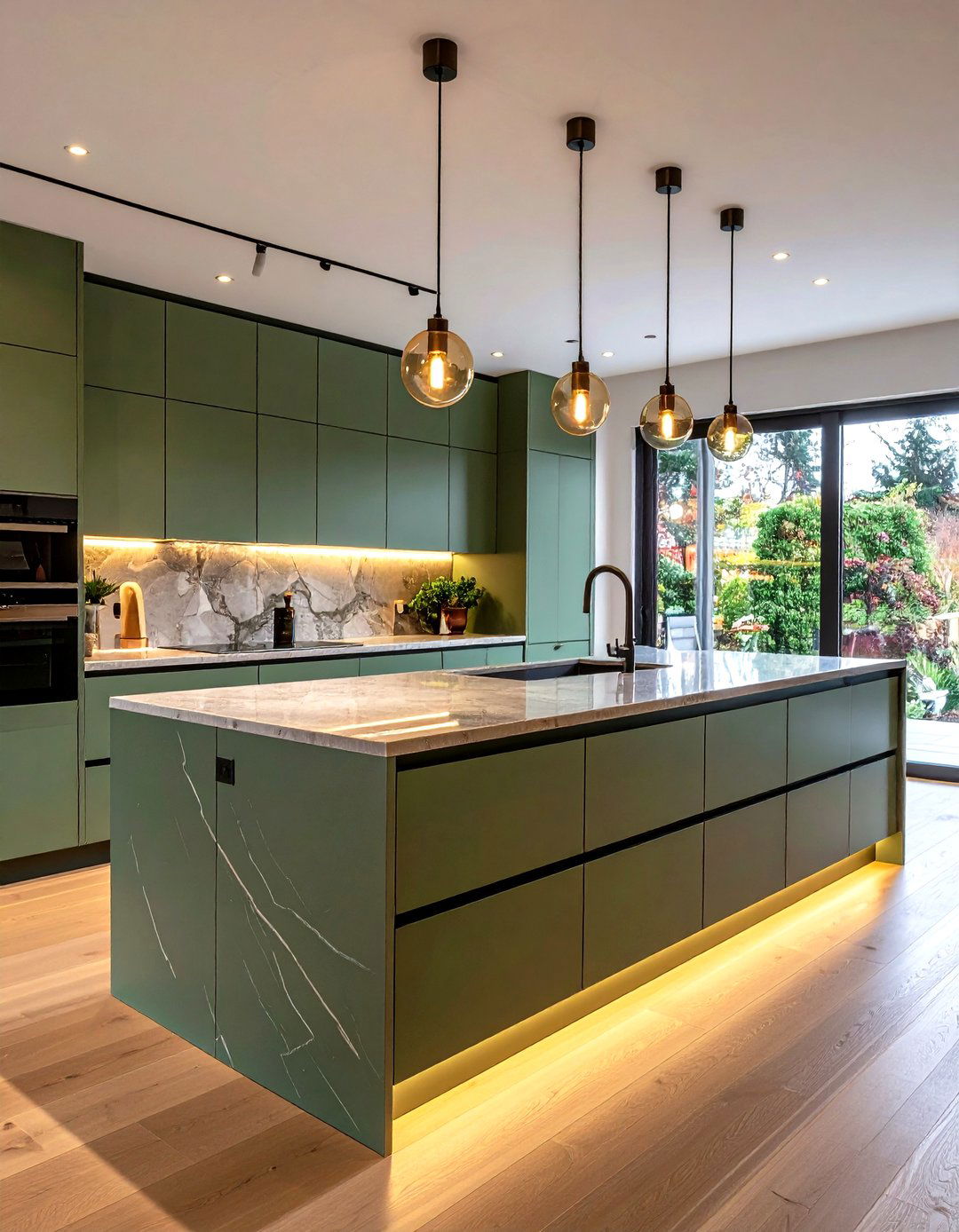
For a sleek, modern look, choose flat-front, handleless sage green cabinetry. Pair with a thin-profile quartz countertop in white or light gray for a streamlined silhouette. Integrated toe-kick lighting can add a subtle glow beneath the island, accentuating its floating appearance.
7. Cottage-Inspired Apron Front
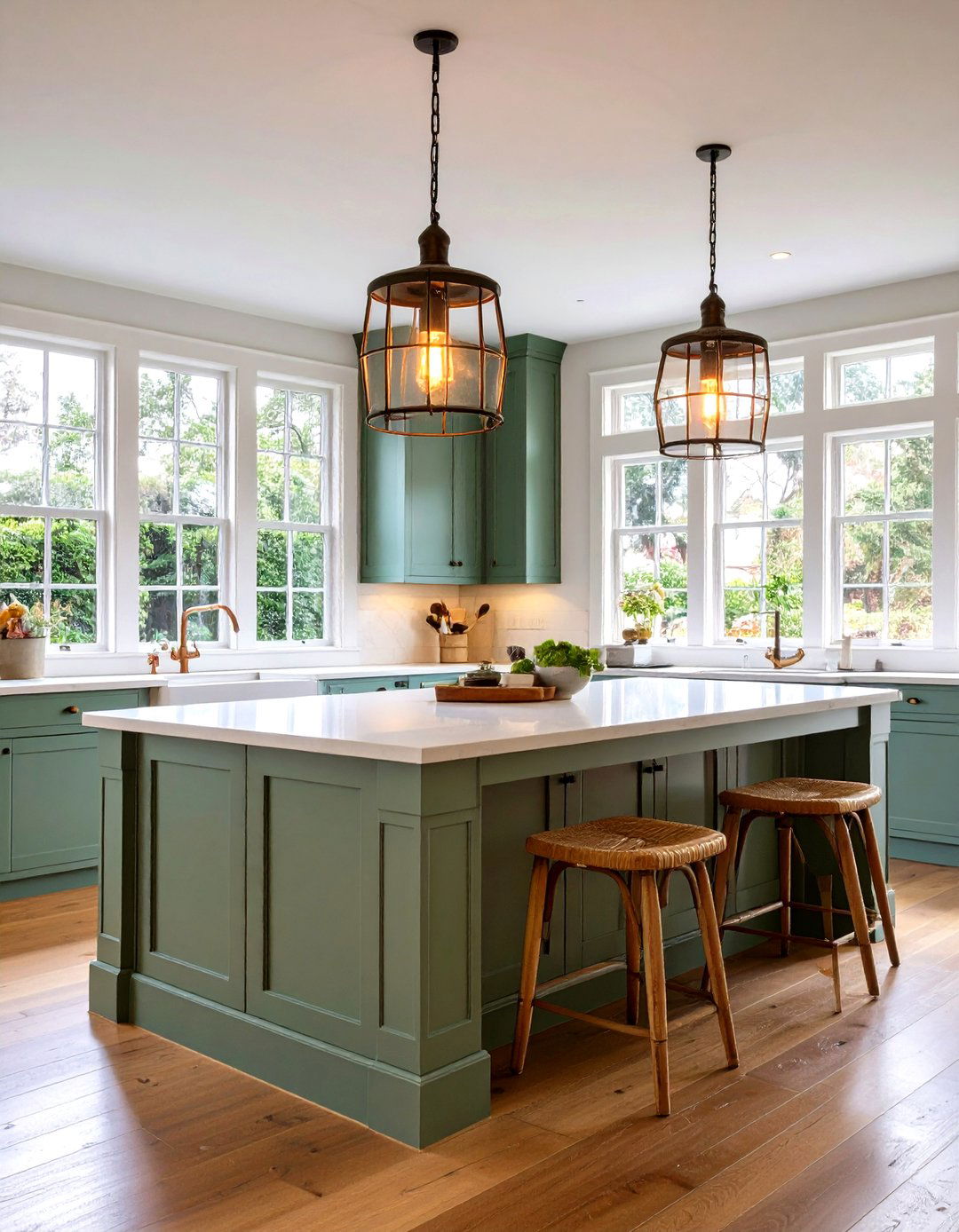
An apron-front island with sage green beadboard or tongue-and-groove detailing evokes cottage charm. Complement with open iron pendant lights and vintage-inspired stools. The textured paneling softly contrasts with smooth countertops, offering a quaint yet refined aesthetic.
8. Two-Level Tiered Island
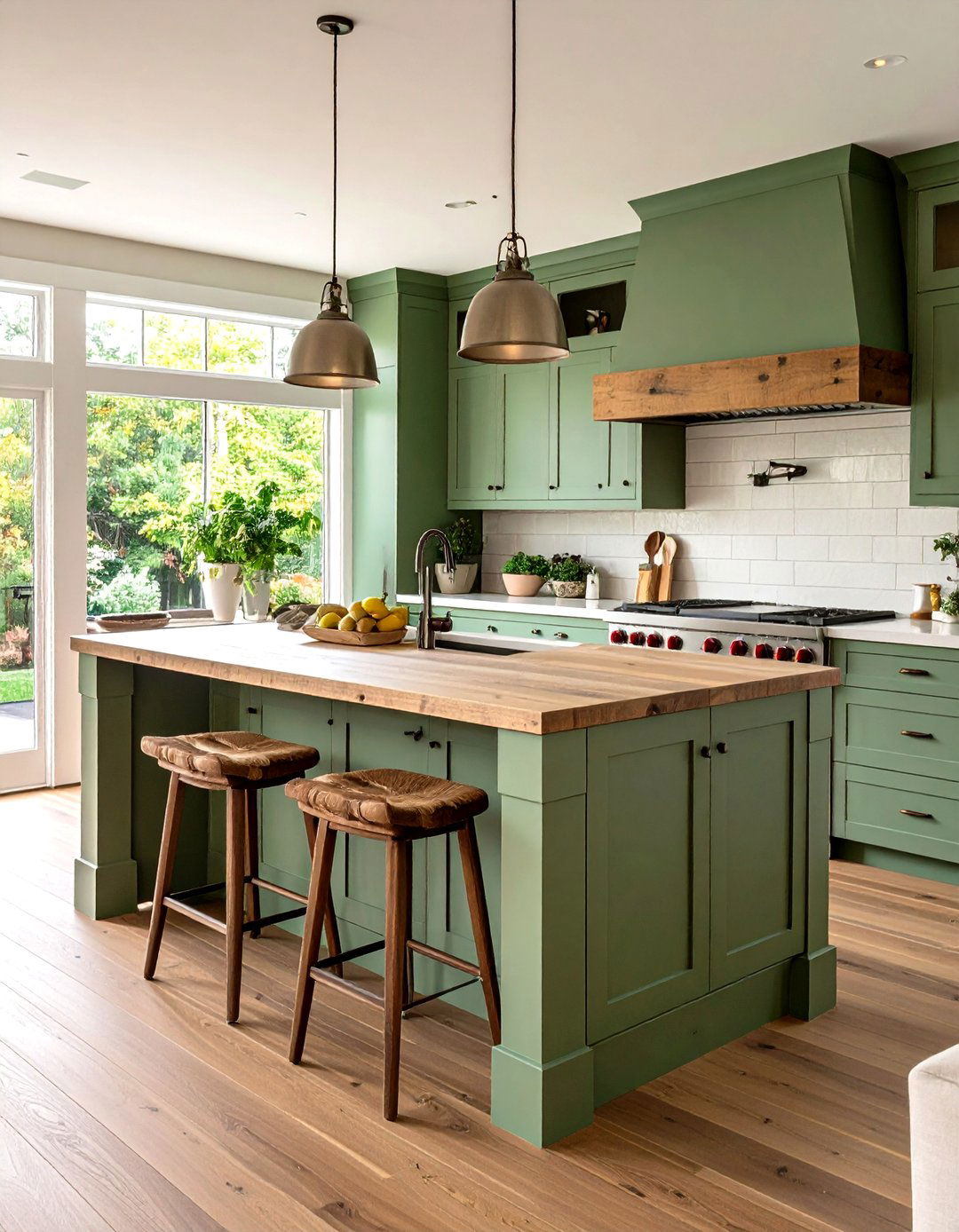
Create visual interest by designing a two-tiered island: a lower prep counter paired with a raised breakfast bar. Paint both levels in sage green to unify the form, and cap the higher tier with reclaimed wood for an inviting spot to linger over coffee.
9. Monochrome Green Palette
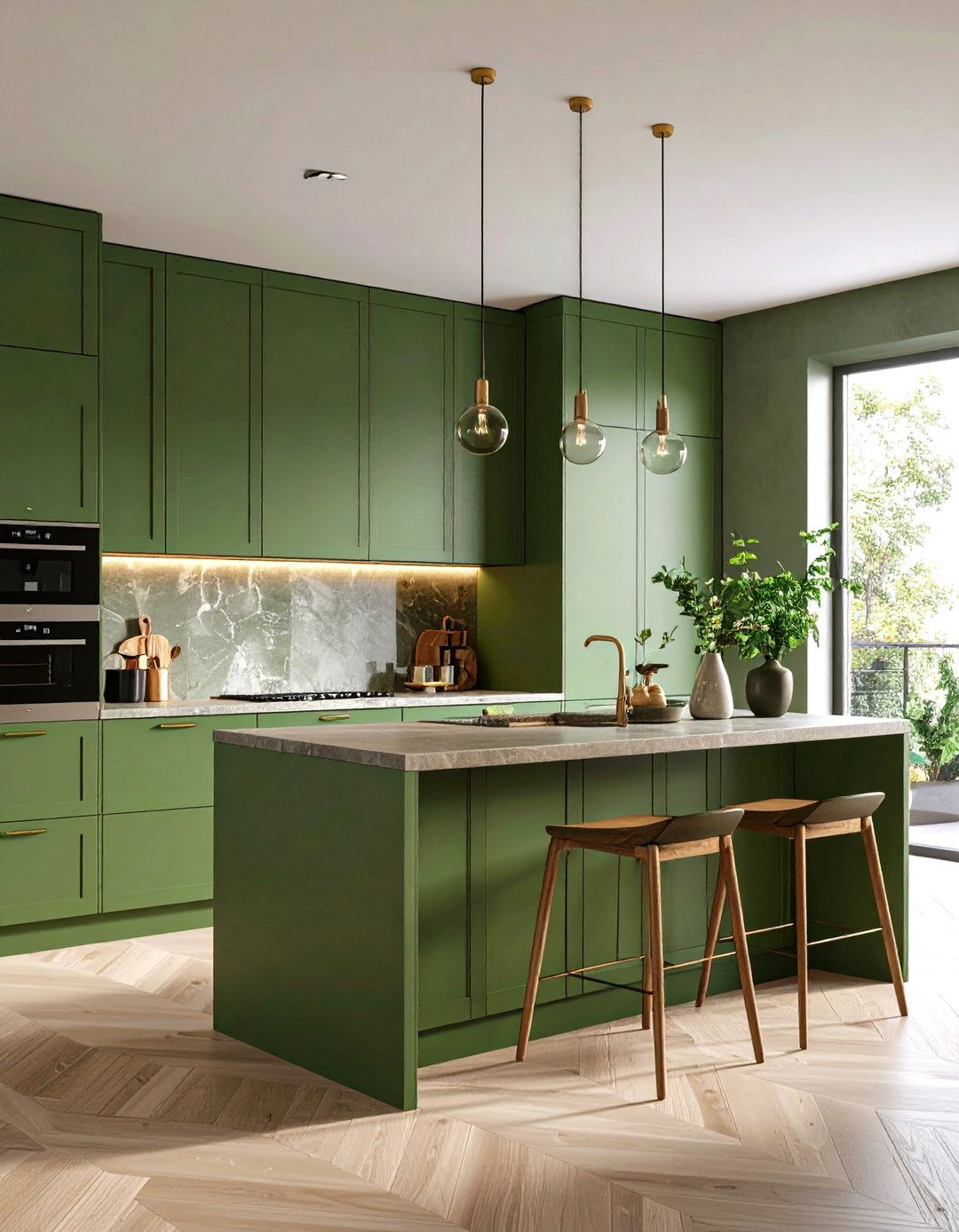
Take green to the next level by extending sage green from the island base to surrounding cabinetry and even walls. Use varied textures—glossy backsplash tiles, matte cabinet finishes, and woven baskets—to avoid monotony. The result is a cohesive, enveloping space that still feels light and fresh.
10. Sage Green and Natural Wood Mix
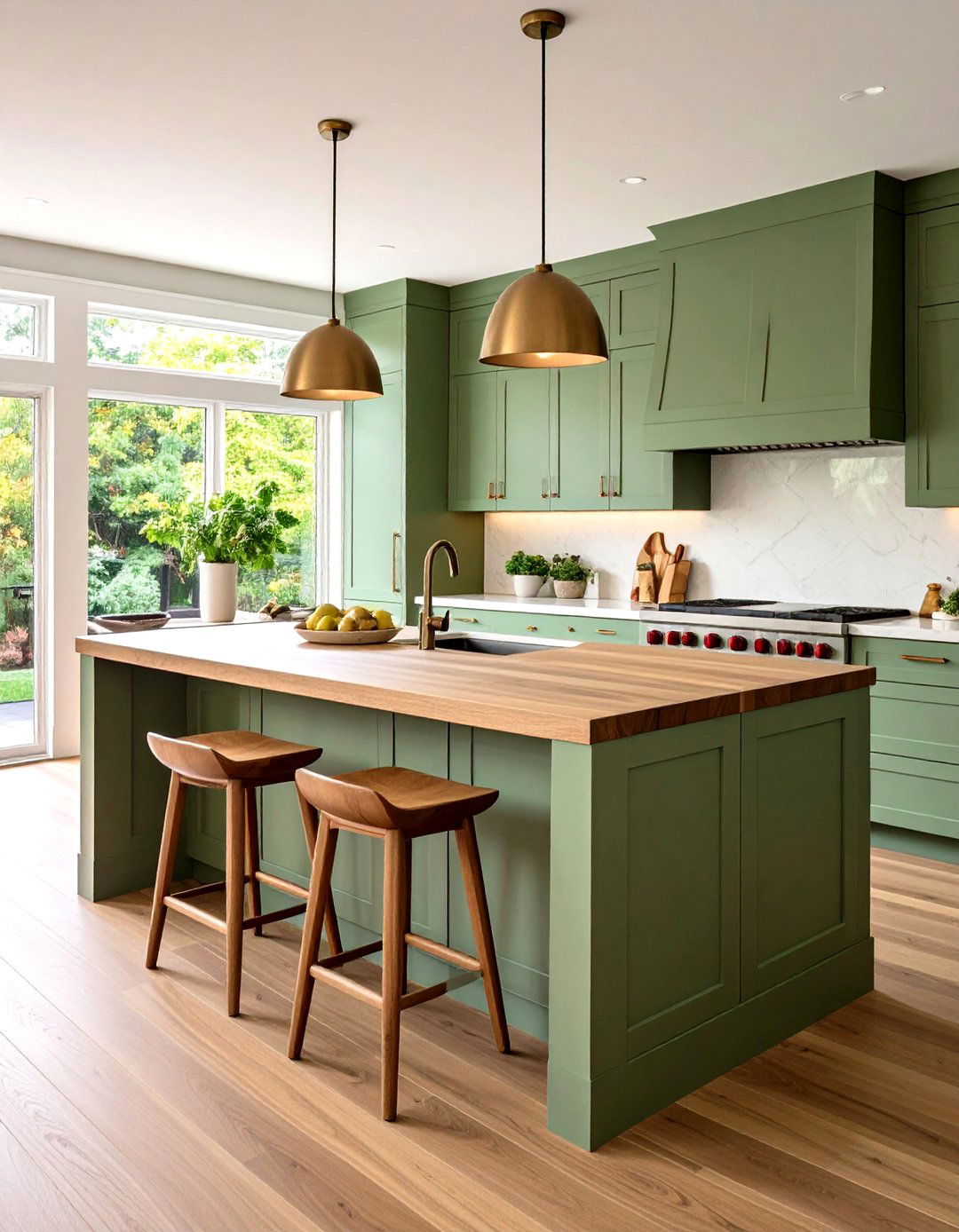
Combine a sage green island base with a contrasting butcher block or walnut countertop. Accentuate with natural wood stools and a wood-framed pendant light to echo the island’s warm tones. This blend of green and wood creates harmony and grounds lighter palettes.
11. Bold Countertop Veining
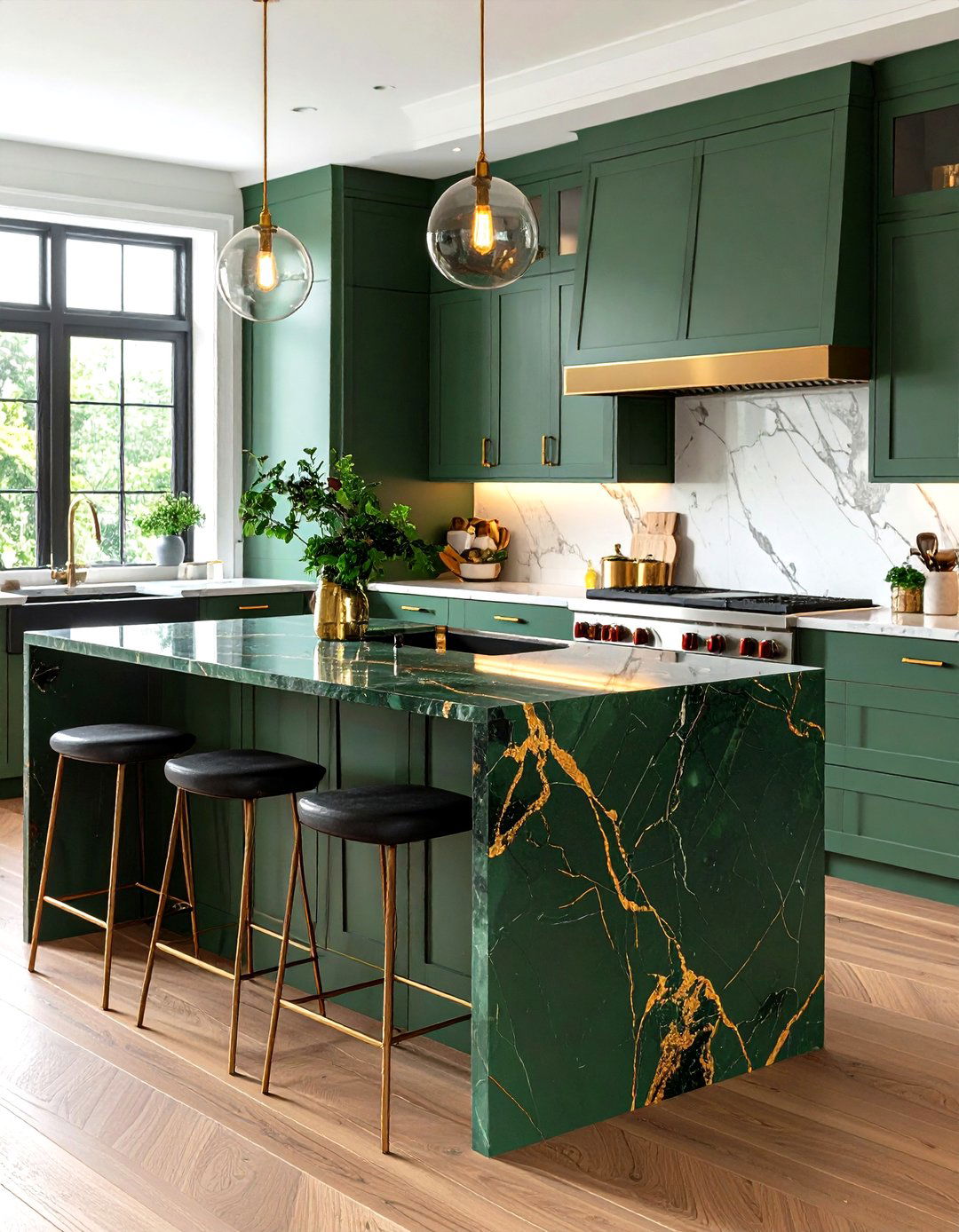
Pair sage green cabinetry with a statement quartz or granite countertop featuring dramatic veining in charcoal or gold. The dynamic patterns add visual depth and drama against the soft green, ideal for kitchens seeking a focal point without heavy color saturation.
12. Textured Cabinet Doors
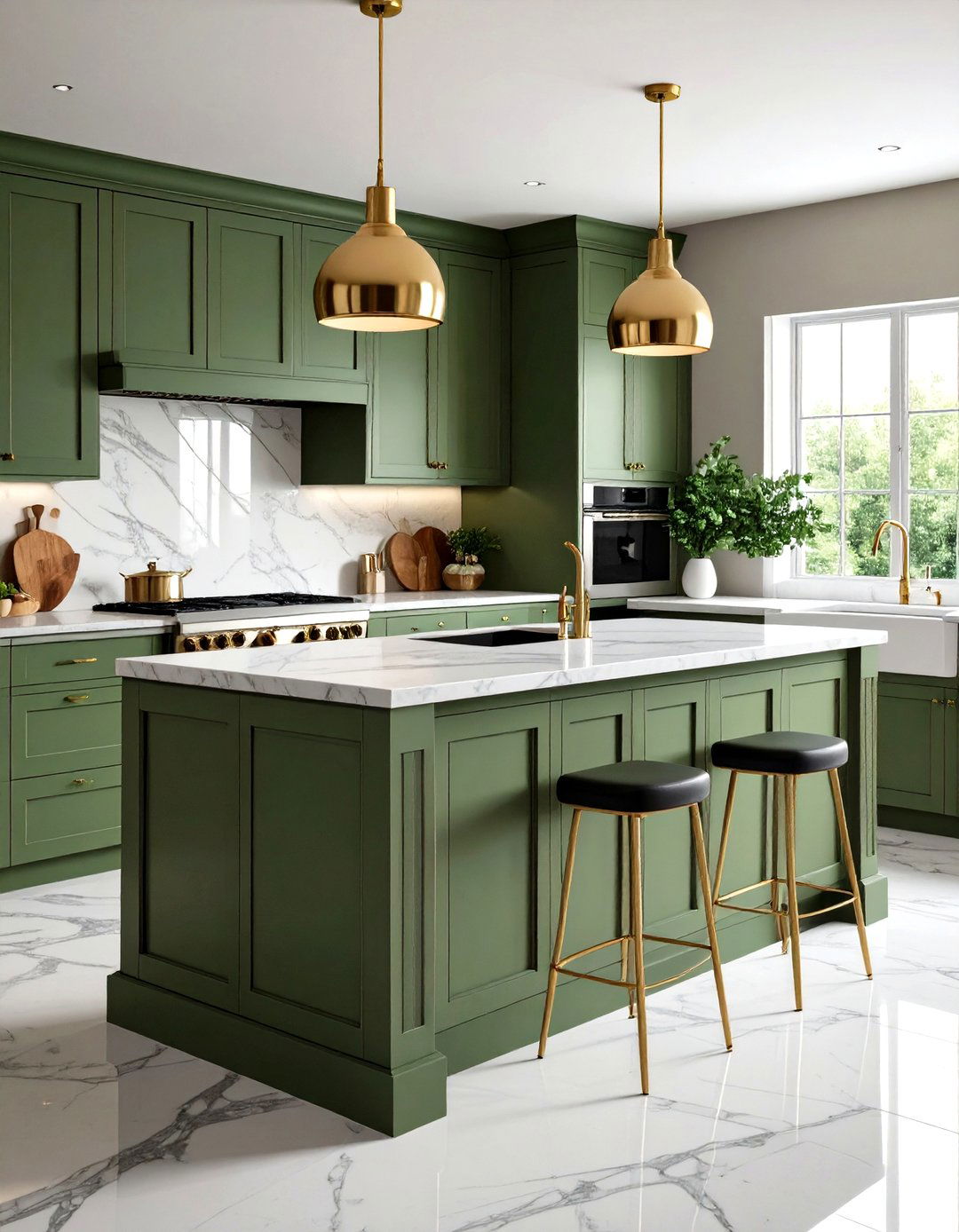
Introduce subtle texture by choosing cabinet doors with fluted or beadboard fronts in sage green. The grooves cast gentle shadows, adding dimension and catching light in interesting ways. Keep countertops simple—white marble or quartz works beautifully.
13. Integrated Seating Bar
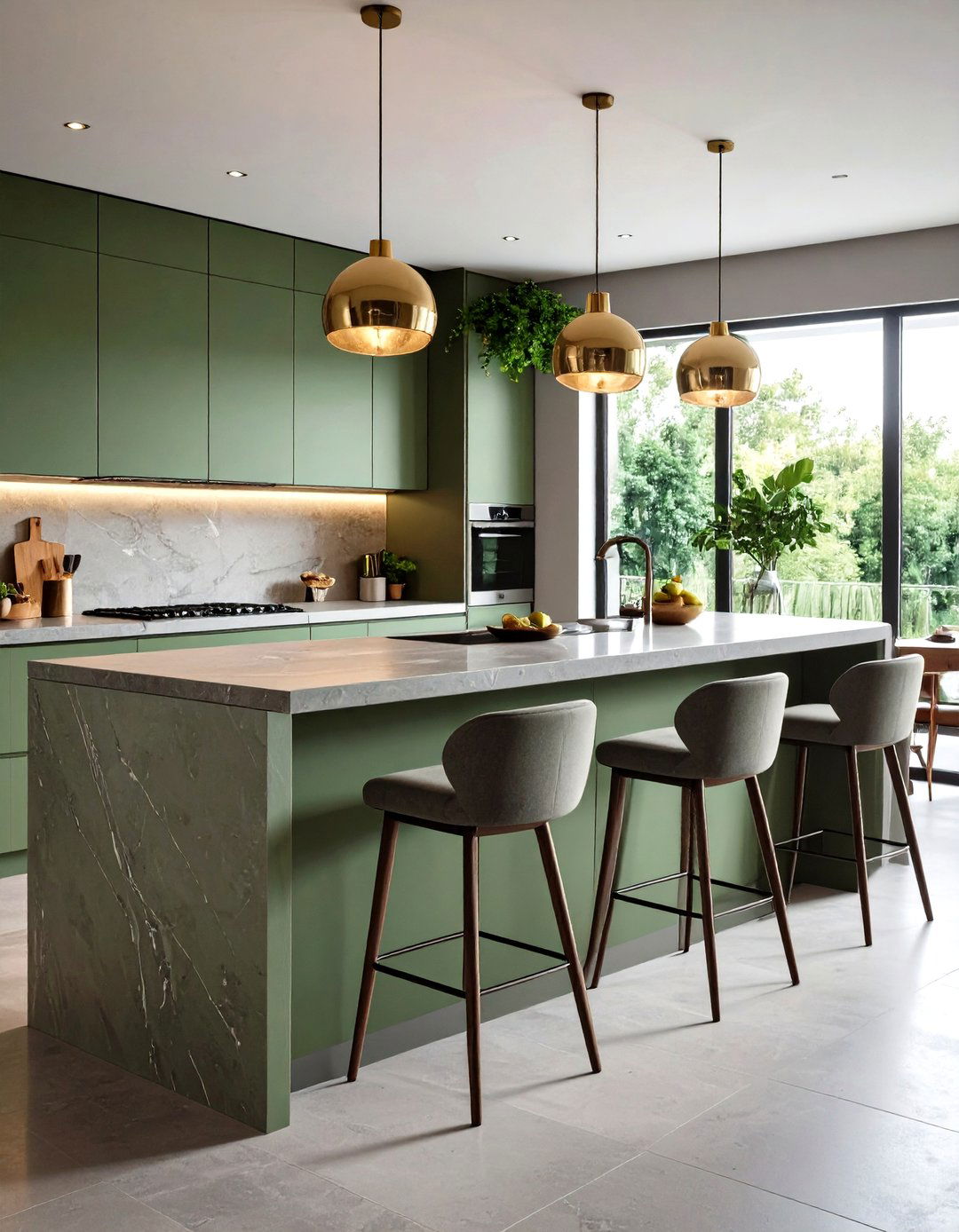
Extend the island countertop overhang to accommodate seating along one side. Paint the island in sage green and match barstool upholstery or cushion fabrics in complementary neutral tones like linen or stone gray, ensuring a harmonious, welcoming vibe.
14. Patterned Tile Insets
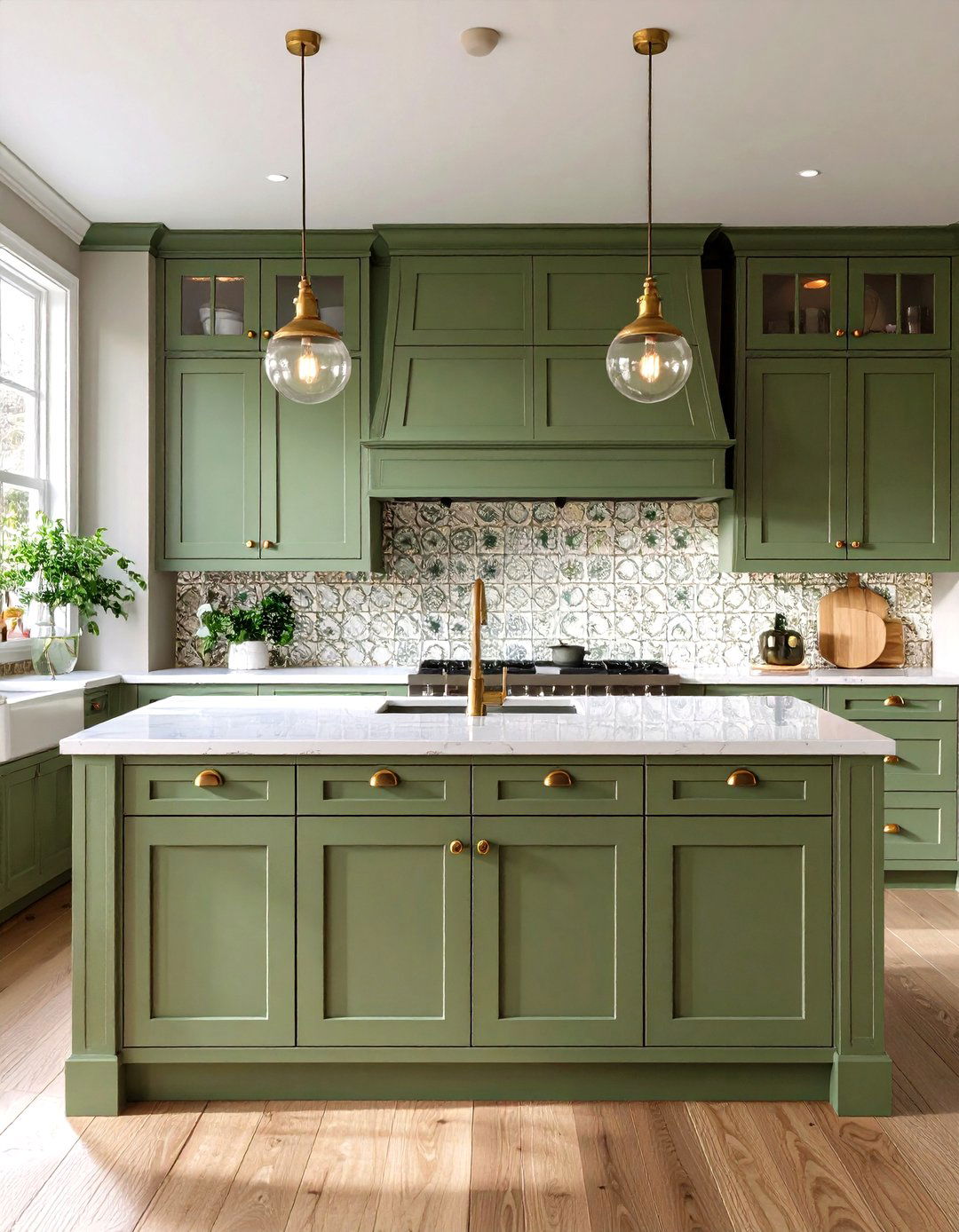
Inlay a section of patterned encaustic or subway tile into the island face, framed by sage green cabinetry. This decorative detail adds a splash of personality and texture, perfect for eclectic or bohemian-inspired kitchens looking to mix color and pattern.
15. Floating Island Design

Opt for a cantilevered countertop that appears to float above a narrower sage green base. This minimalist approach maximizes legroom for stools and highlights the green hue without overwhelming the space. A slim under-counter LED strip can enhance the floating effect.
16. Hidden Appliance Garage

Maintain the sleek look of a sage green island by integrating a hidden appliance garage behind roll-up tambour doors. The seamless fronts keep clutter at bay, while the sage finish ensures any subtle seams blend into the overall design.
17. Chalkboard Panelside

Add a playful chalkboard panel to one end of a sage green island. It’s perfect for jotting weekly menus or grocery lists and contrasts nicely with the smooth painted finish. Frame the chalkboard with a slim wood border to tie in with other natural accents.
18. Curved Silhouette
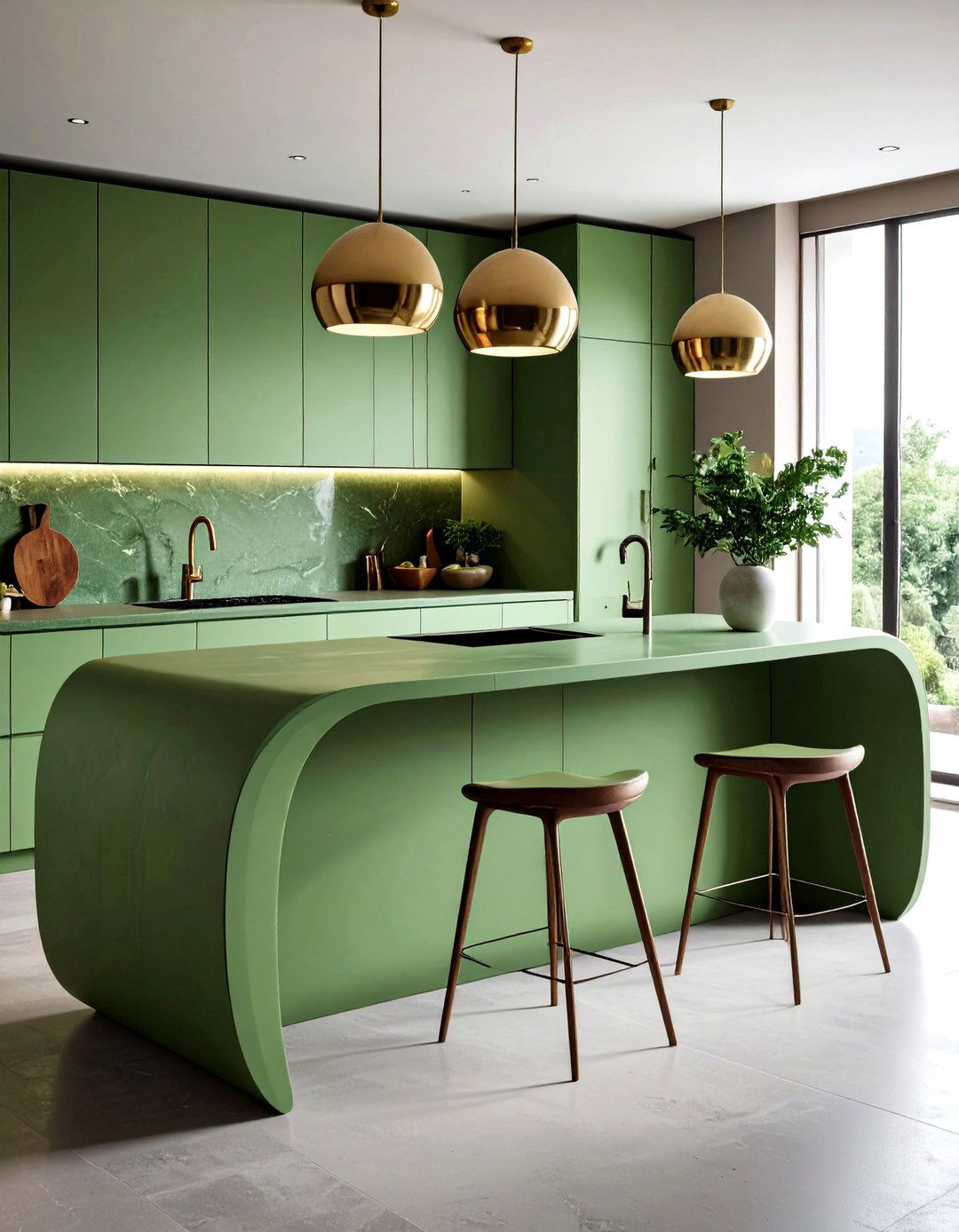
Softly curve the corners of a sage green island for a more organic, artisanal feel. A rounded island encourages traffic flow in open-plan kitchens and introduces a sculptural element. Pair with understated hardware to let the form take center stage.
19. Matte Finish Elegance
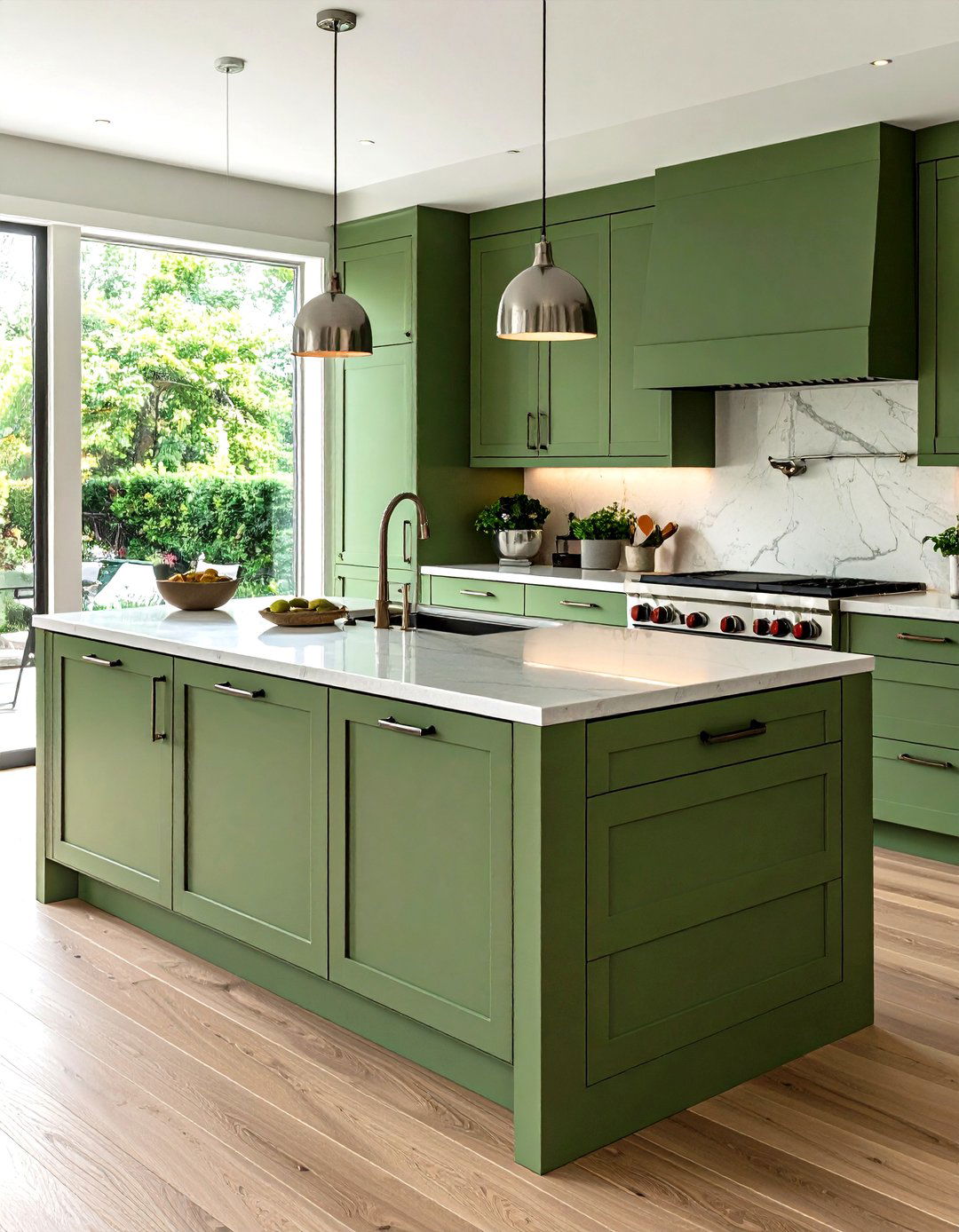
Choose a matte sage green paint for a contemporary, refined look that feels both luxurious and tactile. Matte finishes hide minor dings and fingerprints, making them practical for busy kitchens. Balance with polished chrome or stainless-steel fixtures for contrast.
20. Island with Open Bookcases
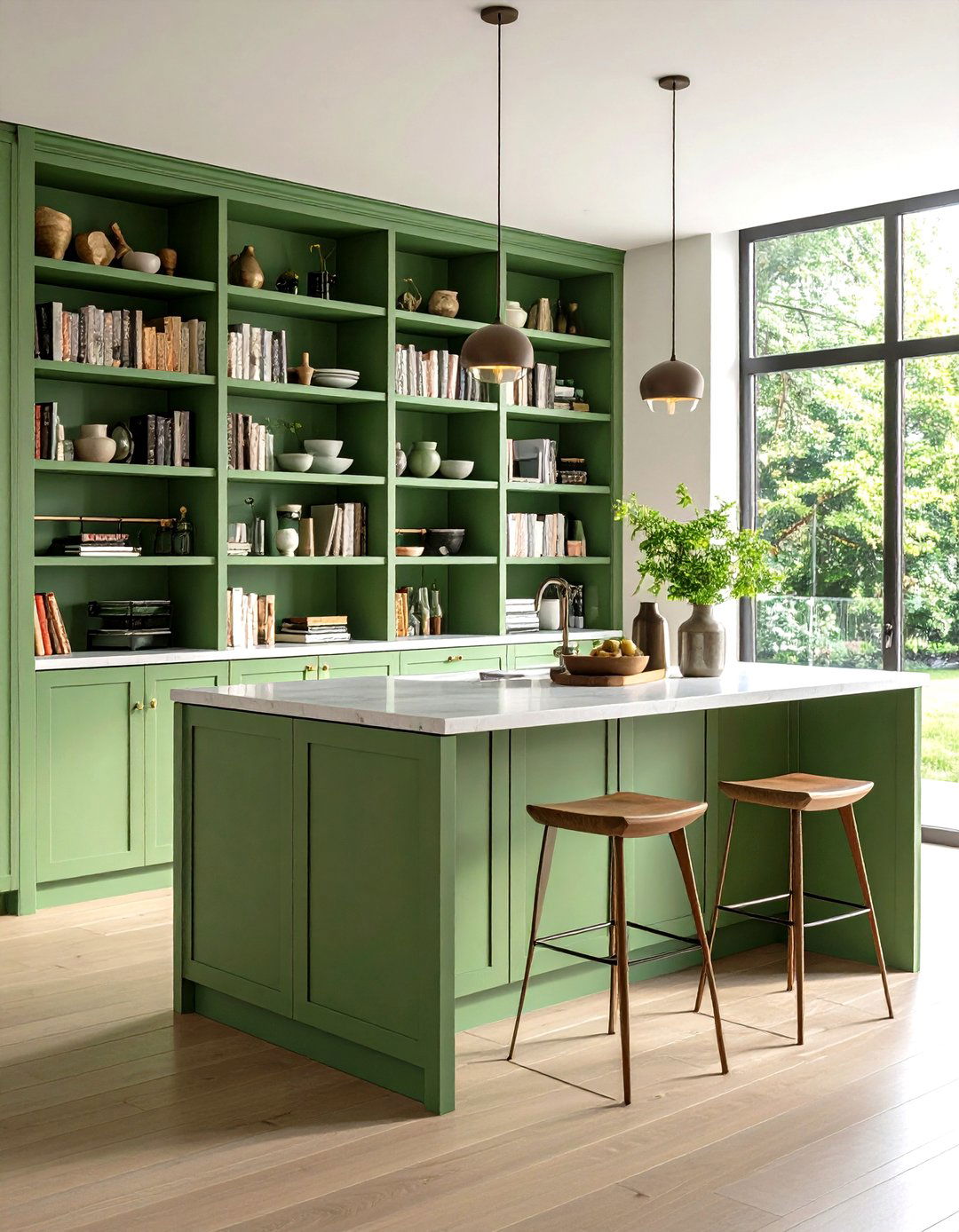
Incorporate open bookcase shelving on one side of the island to store cookbooks and display decorative pieces. Paint the entire island sage green to ensure cohesive flow, while the open sections lighten the visual weight and offer practical storage.
Conclusion:
Embracing sage green for your kitchen island invites a harmonious blend of tranquility and style into your home. Whether you favor classic shaker doors, modern minimalism, or cottage-inspired details, sage green offers the versatility to adapt across design genres. By pairing this calming hue with complementary materials—wood, marble, brass, or patterned tiles—you can create a centerpiece that not only enhances functionality but also becomes a timeless, inviting focal point in your kitchen.


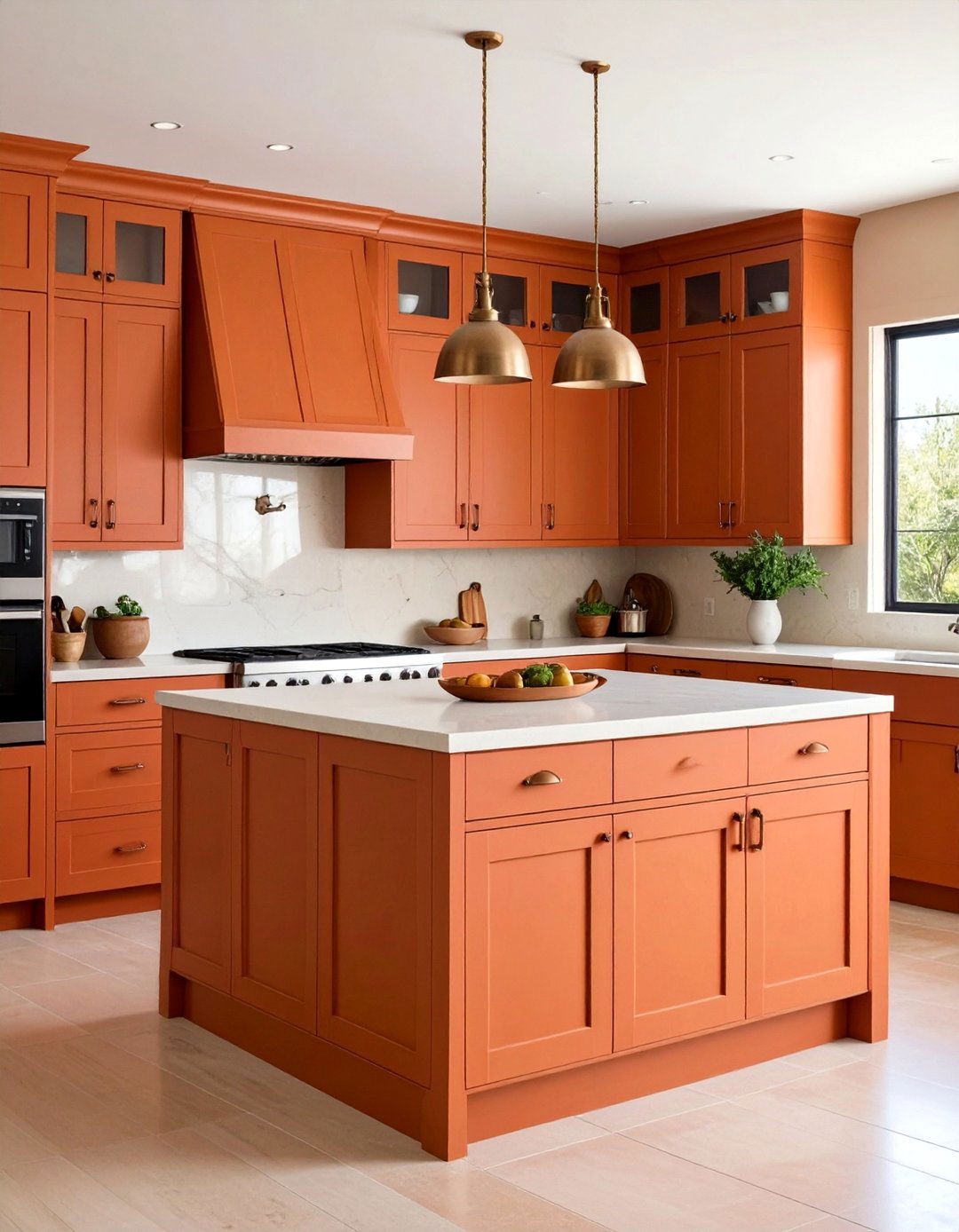
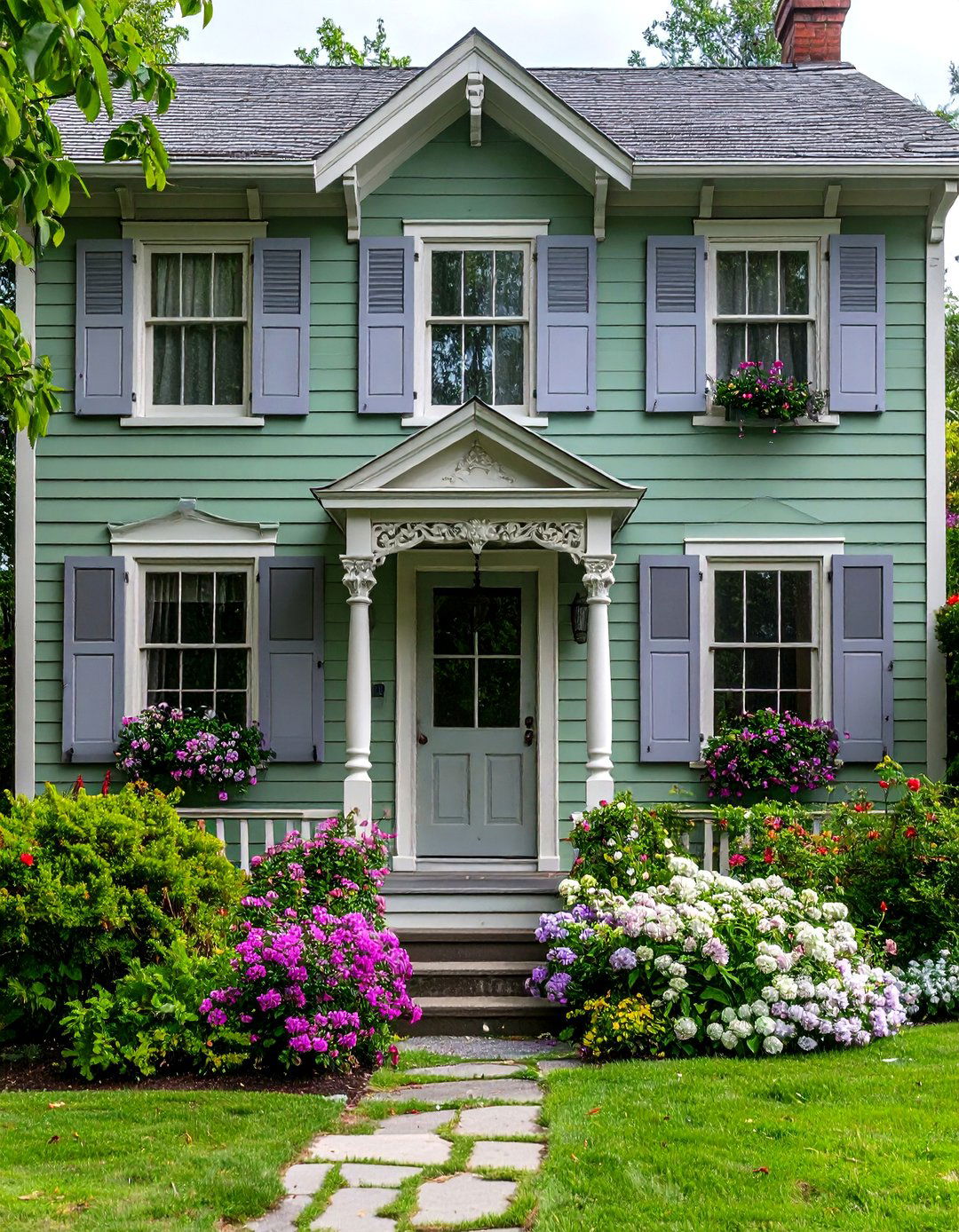

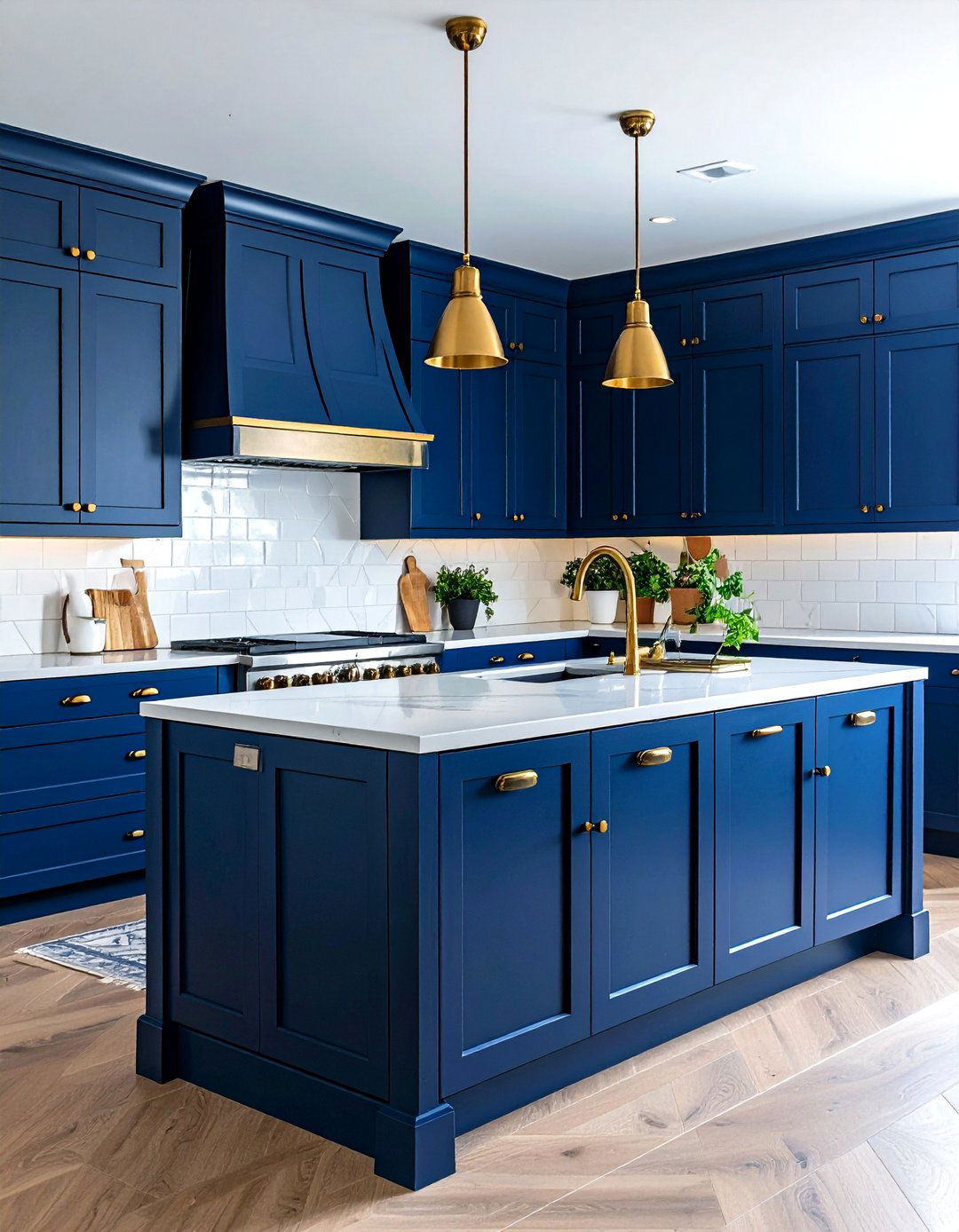
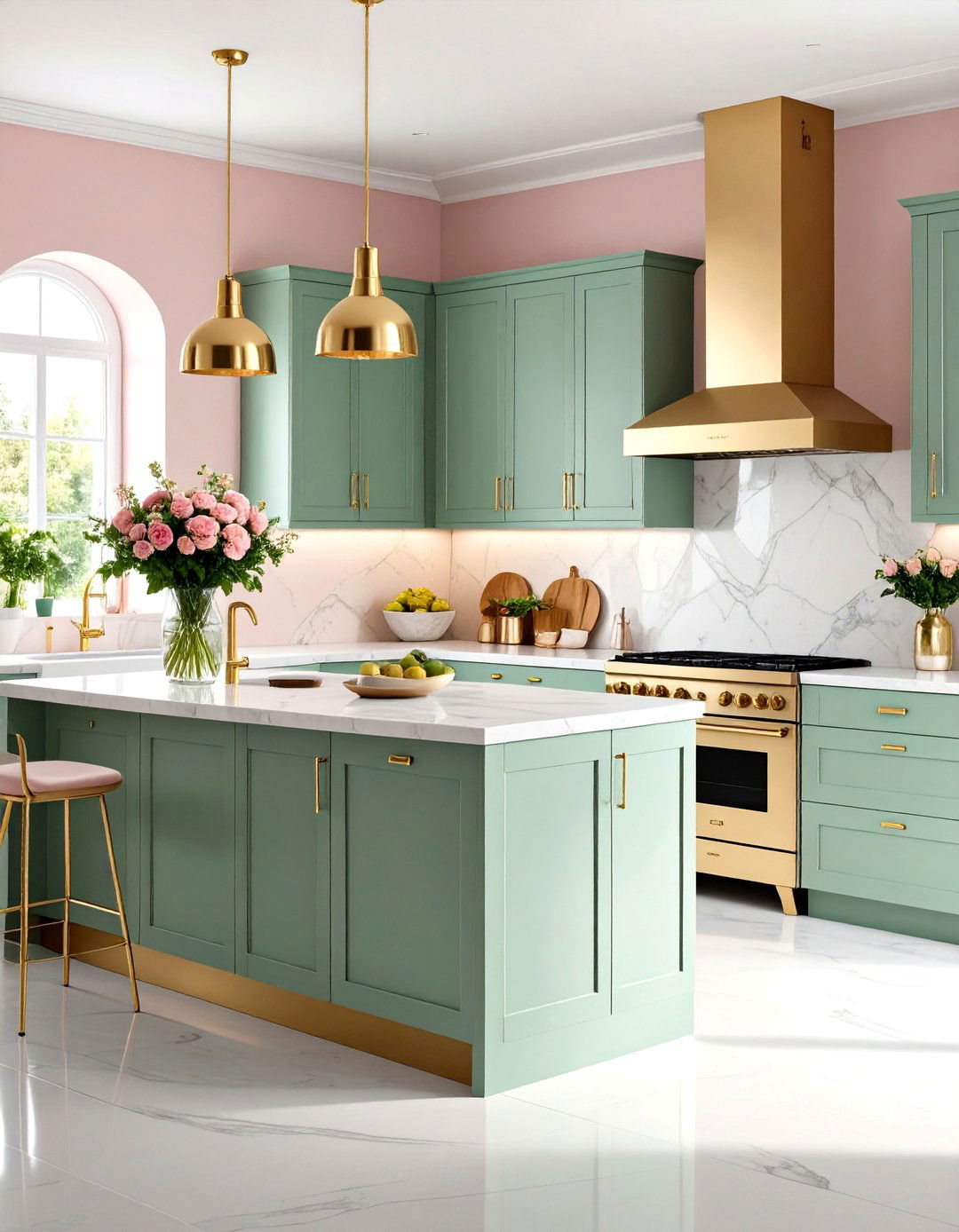
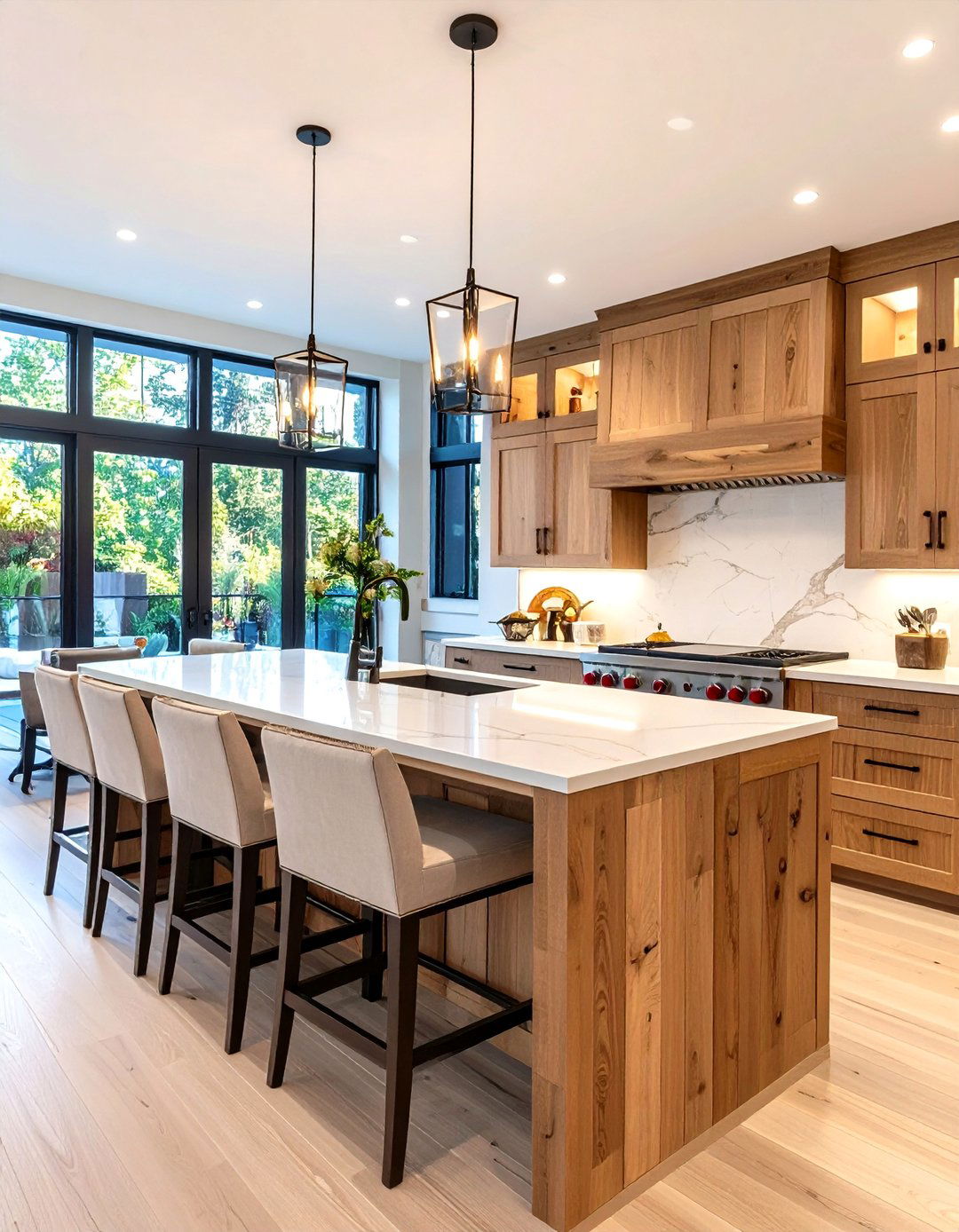
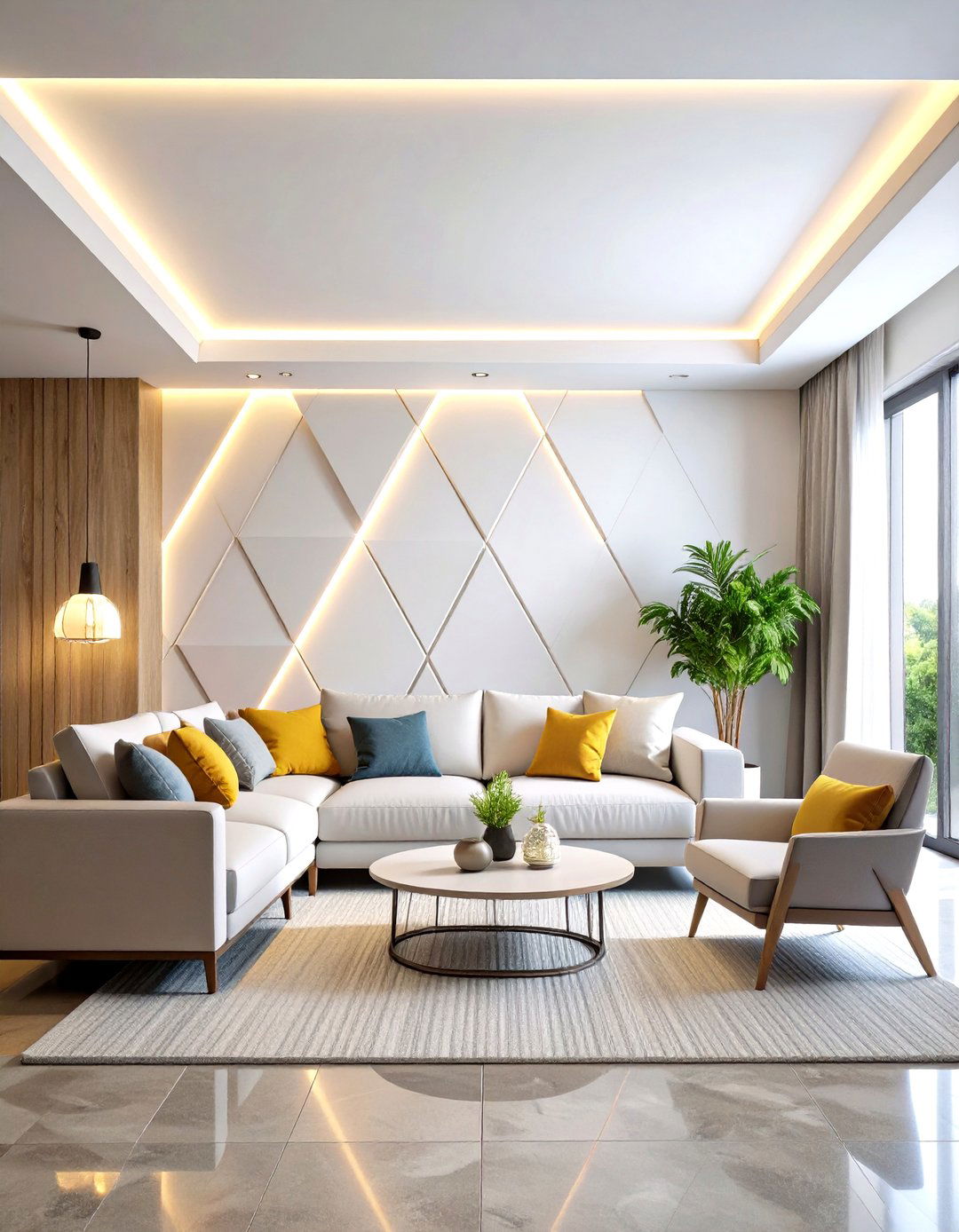
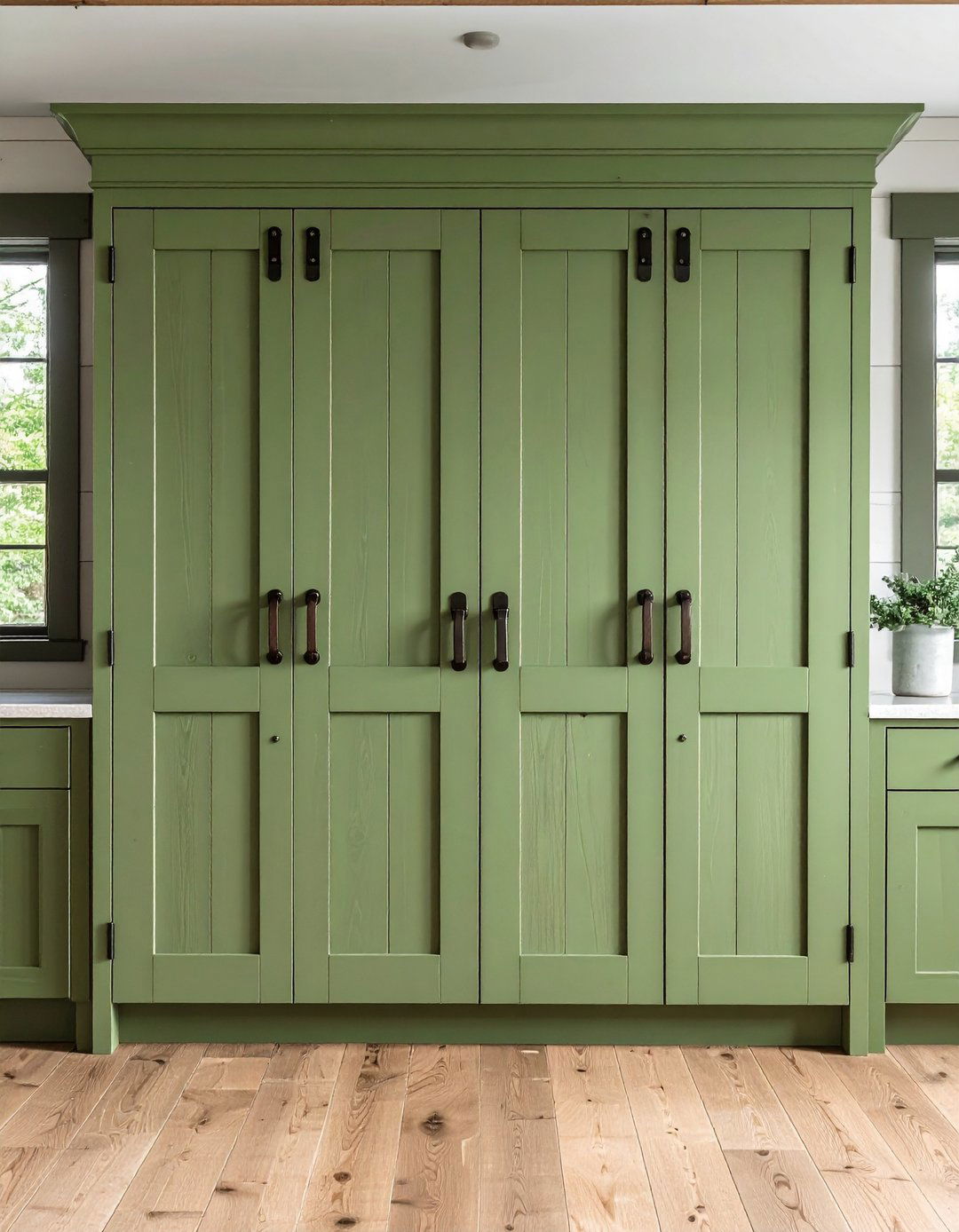
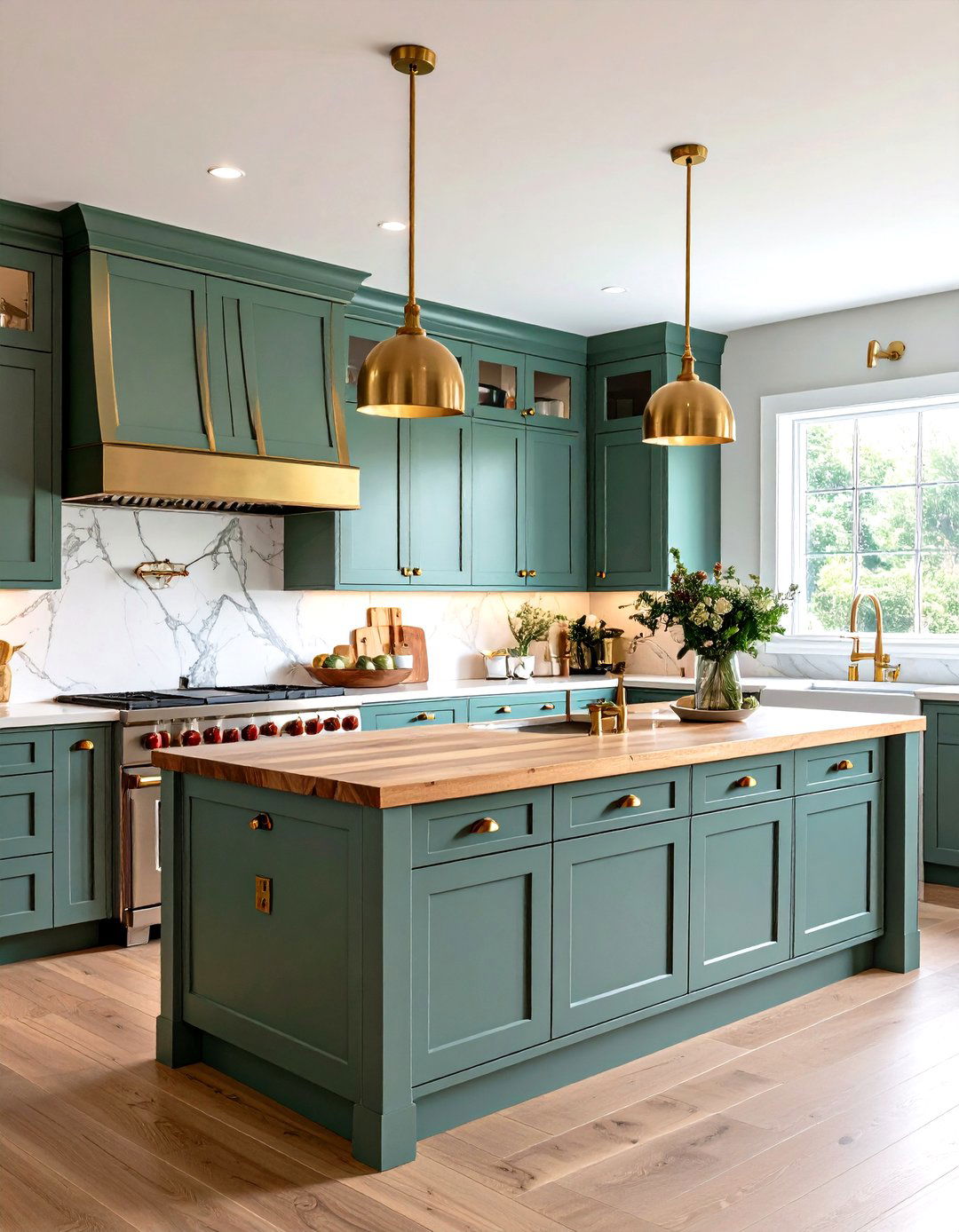
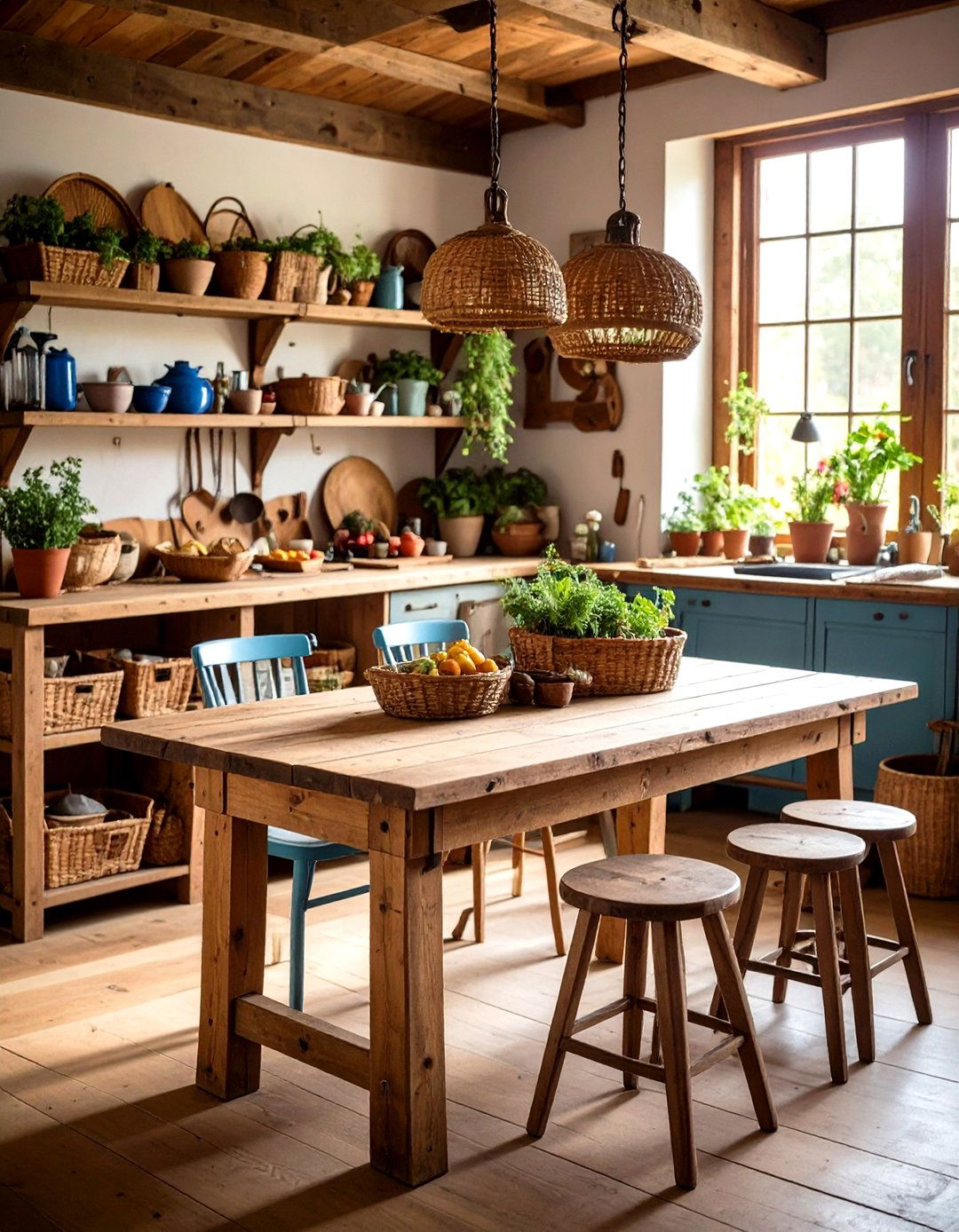

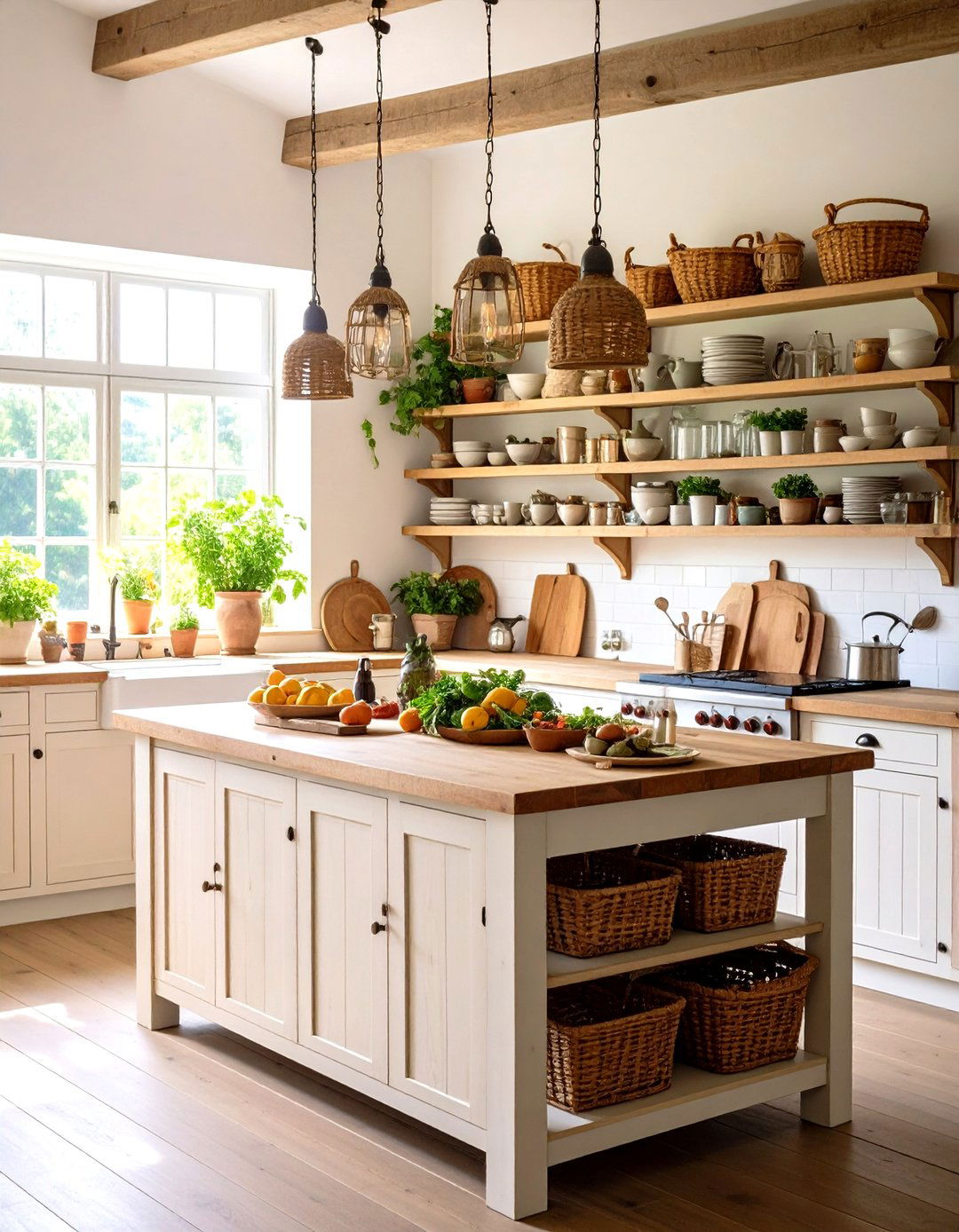
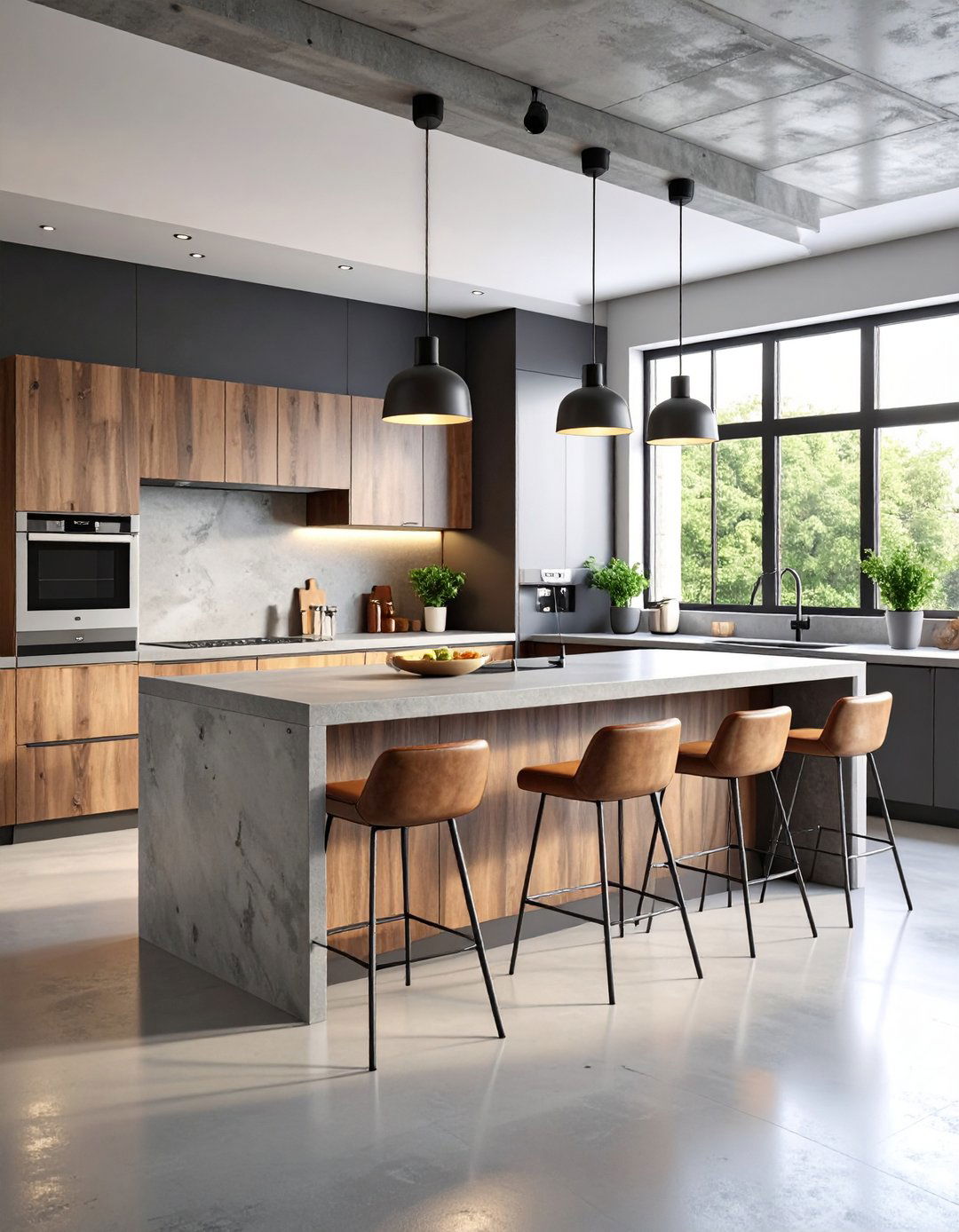

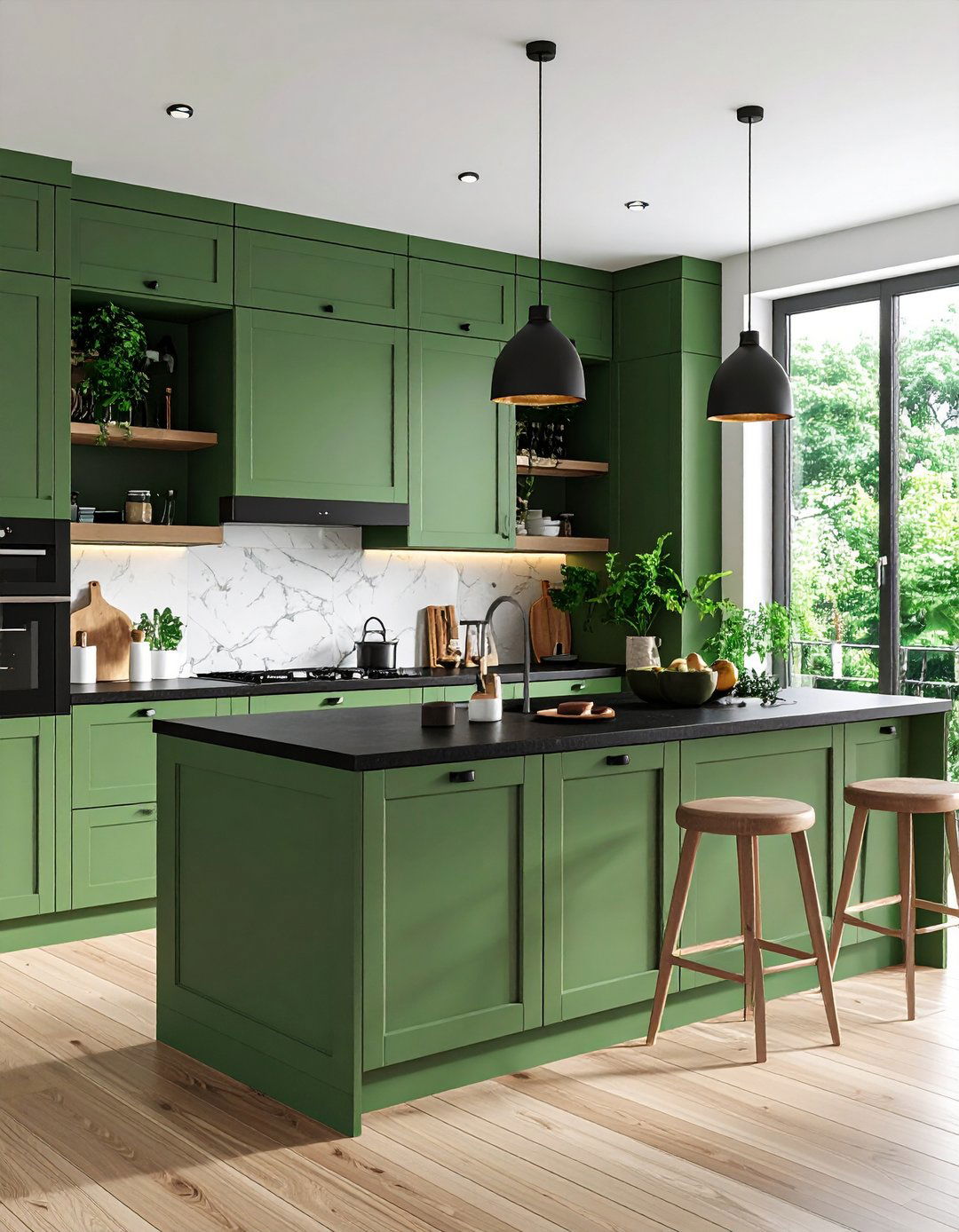
Leave a Reply